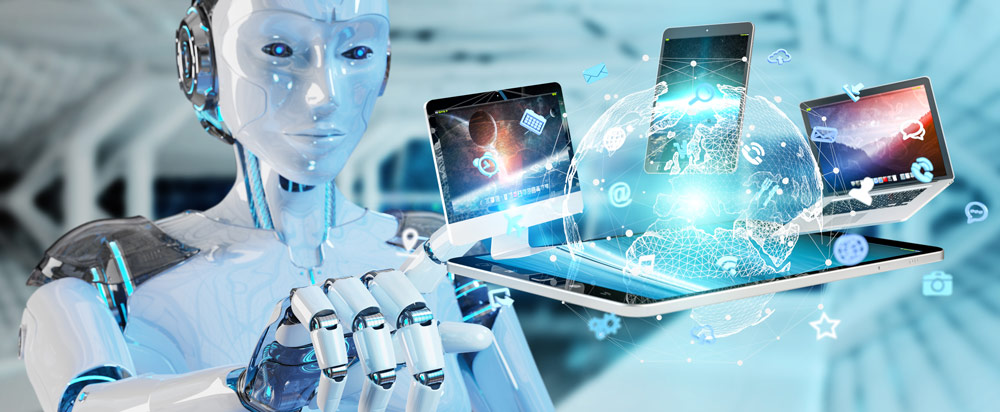
The Amazing, Yet Unsettling Future of IT
Before diving into key trends, watch this insightful video by Fireship on the rapid advancements in technology and what they mean for the future of IT:
What Does the Future Hold for IT?
The future of IT is evolving rapidly, driven by AI, automation, cybersecurity challenges, and the rise of the metaverse. Businesses that fail to adapt to these trends risk falling behind in a competitive digital landscape.
In this guide, we explore the key IT trends, challenges, and opportunities shaping the industry beyond 2025.
1. The Rise of AI-Driven IT Support
AI is no longer a futuristic concept—it’s actively reshaping IT support by automating key processes:
- Automated Ticket Resolution: AI-driven chatbots handle basic IT issues, reducing response times.
- Predictive Maintenance: AI analyzes system data to prevent potential failures.
- Natural Language Processing (NLP): AI-driven helpdesks provide human-like support interactions.
🔹 Future Insight: By 2026, AI-driven IT support is expected to reduce IT service costs by 30%, according to Gartner.
2. Proactive IT Support & Cyber Resilience
Traditional IT support reacts to problems, but the future IT model emphasizes proactive monitoring:
- Real-Time System Analytics: Early detection of vulnerabilities and hardware failures.
- Automated Security Patch Management: Reducing cybersecurity risks.
- Cloud-Based Disaster Recovery: Ensuring business continuity with backup automation.
🔹 Future Insight: 60% of IT organizations will have adopted AI-powered monitoring tools by 2027.
3. IT Support Goes Mobile & Cloud-First
IT support is no longer confined to on-premise solutions. The industry is shifting towards cloud-based and mobile IT management:
- Mobile Device Management (MDM) for secure, remote troubleshooting.
- 5G-Powered IT Solutions, enhancing connectivity and remote work efficiency.
- Augmented Reality (AR) IT Support, allowing technicians to guide users in real time.
🔹 Future Insight: By 2028, 70% of IT service companies will provide fully remote, cloud-powered support.
4. Context-Aware & Hyper-Personalized IT Support
Modern IT systems are evolving to understand user context for more effective problem-solving:
- User Behavior Analytics (UBA): Detects and prevents security threats.
- IT Support via Digital Twins: Simulating system behavior to predict issues.
- Voice-Activated IT Support: AI-driven voice assistants for hands-free troubleshooting.
🔹 Future Insight: Companies using personalized IT solutions experience a 25% boost in user productivity.
5. The Changing Role of IT Support Teams
With automation taking over routine tasks, IT professionals are shifting to strategic roles:
- IT Consultants & Business Analysts will drive tech-driven growth strategies.
- Cybersecurity Experts will focus on data protection and risk mitigation.
- Cloud Architects & AI Engineers will shape the infrastructure of future IT services.
🔹 Future Insight: By 2030, 50% of IT roles will involve AI collaboration, requiring hybrid AI-human expertise.

Frequently Asked Questions (FAQs)
What is the future in IT industry?
The IT industry is moving towards automation, AI-driven solutions, and decentralized cloud infrastructure. Companies will rely on cybersecurity, machine learning, and IoT to drive business innovation.
What is the future of information technology?
The future of information technology will focus on intelligent automation, real-time analytics, and adaptive cybersecurity. AI will play a key role in self-healing networks and proactive IT management.
What is the future of IT services?
IT services will transition into fully AI-assisted models, offering predictive maintenance, remote troubleshooting, and hyper-personalized IT support. Cloud-native solutions will dominate IT infrastructures.
What does the future of IT look like?
IT will become faster, more intelligent, and less dependent on human intervention. Companies that invest in AI, cloud solutions, and cybersecurity resilience will gain a competitive edge in the digital era.
Final Thoughts: The IT Revolution is Here
The future of IT is driven by AI, automation, and cloud-first solutions. Companies must adopt proactive IT strategies to stay ahead in this dynamic landscape.
🔹 Are you ready for the IT revolution?
At Ciegate Technologies, we provide cutting-edge IT solutions tailored for the future of IT support. Contact us today to future-proof your IT strategy!
If you need more contact information, we leave you our Google profile Ciegate Miami.